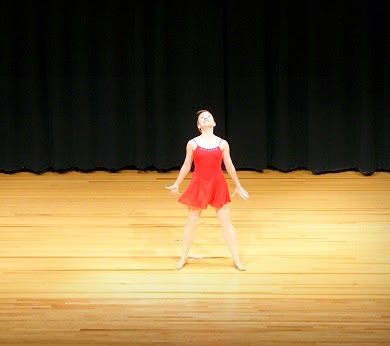A big, open room.
Thirty minutes.
Go!
Three and four year old dance classes are a staple of most recreational dance studios. "Creative movement" classes for this age group are becoming more and more common at even the most serious pre-professional schools. While kids this young aren't developmentally ready to learn much technique, they are ready to move, explore music and, most importantly, to love dance. From a business perspective, it may also be wise to open your doors to younger students and their families in hopes of inspiring loyalty to your school.
As a new dance teacher, I was full of enthusiasm for this baby ballerina set, but unsure how to go about teaching them. My preference has always been for working with older kids who have the patience for my nit-picky corrections. How could I teach these tots to dance and lay the foundations for proper technical development while still respecting and encouraging their need to learn through play?
At first, I structured my "Creative Movement" class (originally just for three year olds) a lot like my Pre-Ballet class which is geared toward five and six year olds, just with fewer exercises. This was fine and the kids still had fun, but they didn't retain much from week to week and certain kids had trouble focusing on the steps and standing in lines. I did some research, observed classes by other teachers and evolved my creative movement syllabus to make it more focused on, well, actual creative movement, than formal dance. I thought I'd share my ideas for fellow teachers:
Predictable, but Exciting
Predictable, but Exciting
Most kids at this age thrive on routine. Following a set class structure helps kids know what to expect each class helping them feel less overwhelmed. My students also like naming their favorite activities and "telling me" what part of class we're doing next. Every class follows the same basic structure:
- "Hello dance" - a song with guided movement from a creative movement CD
- Circle stretching
- "Ballet time" - working on two or three very basic ballet/technique ideas like sixth position (and first position later in the year), demi plie, port de bras
- Across the floor/follow the leader
- Games
- Goodbye dance - bowing together and clapping for ourselves
- Stickers/reward
To keep their interest, I scatter my introduction of new steps or concepts throughout the year and try to rotate the games we play each week.
Use Props Wisely
Some teachers use a lot of props and toys in their creative movement classes which can be great. I don't like to use as many props because of both the logistical problems (time it takes to take out and put away in a 30 minute class) and because I want kids to focus on their own bodies and how they move. Some simple props I like to include are yoga mats or large floor "spots" for jumping activities. I have kids practice lining up behind the mats or spots then explain to them that the mats are rain puddles.
We jump in and out the puddles with both feet ("splash!"), then practice leaping over the puddles from one foot to another foot. I also like to use scarves to demonstrate slow movement and fast movement or to let the kids dance with during the games portion of class.
Learning with Games
Games are a fundamental part of my creative movement class. Sometimes I'll devote as much as 1/3 of the class to them. I use games to emphasize different movement concepts we've learned such as dancing different speeds or telling stories with out bodies.
One of my favorite ones for this age group (and up to age 7 or 8) is the "magic elevator" game. I have the kids line up by the barre and pretend it's a magical elevator. I'll say, "The elevator doors are opening and today, we're in a [place]. Show me how you move in [place]." The place might be an ice rink, under the sea, a jungle, high in the air, outer space, or even a room full of sticky jello. I might call out descriptions of the place or, if they're stuck, suggestions for how to move in different spaces, if they need guidance. I always finish with the elevator taking us back to the ballet studio so we can move on to the goodbye dance.
Be Flexible
Kids can be unpredictable. While I never let kids dictate the class or the activities, I try to stay in tune with the general mood of the class. If their attention is wavering during "ballet time" I'll move right to across the floor activities, even if it means abandoning a step I was trying to teach them. If they don't seem to be responding well to one game, I'll try another. Every group of kids is different and what works one day might not work the next.
Above all, enjoy your students! Encourage their joyfullness. Listen to their worries. Let them love you and let them dance.


Thank you so much for posting this! Keeping so many little bodies focused for any amount of time is rather daunting for me. I'm definitely borrowing some of your ideas :-)
ReplyDeleteOhhh such a nice class! Sharing is caring GRACIAS!!
ReplyDeleteThis comment has been removed by the author.
ReplyDeletethank you for sharing, im on my third year of teaching 2yr olds and i am starting to run out of new ideas :)
ReplyDeleteSuch instructors need to keep them fit as well because they have a lot of responsibilities on their shoulders to make others fit and to keep themselves fit for the challenges they have to go to Physiotherapy North Ryde to get rid of their agony and an a mental peace which is possible when you have peace in your body that is free of pains.
ReplyDelete